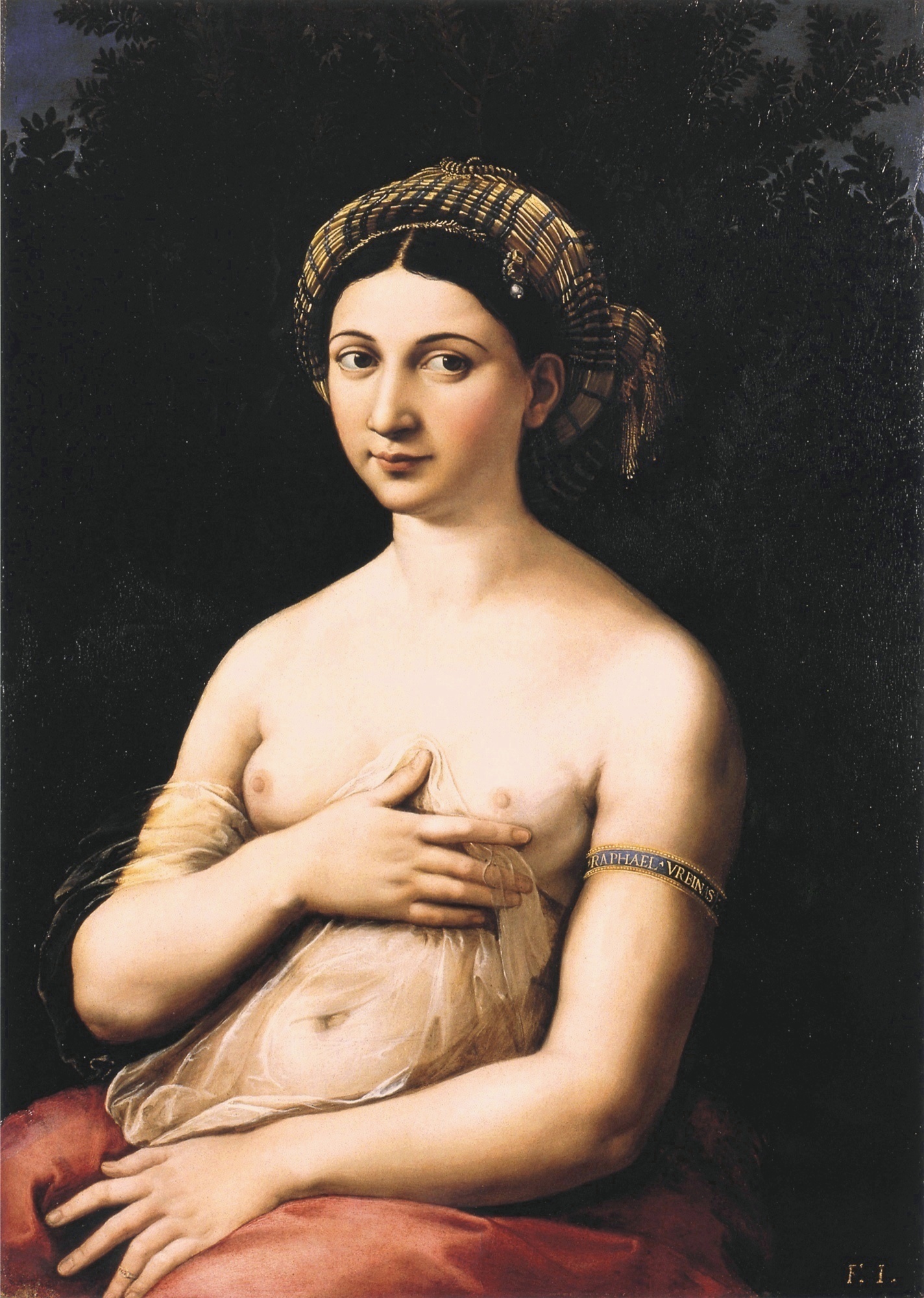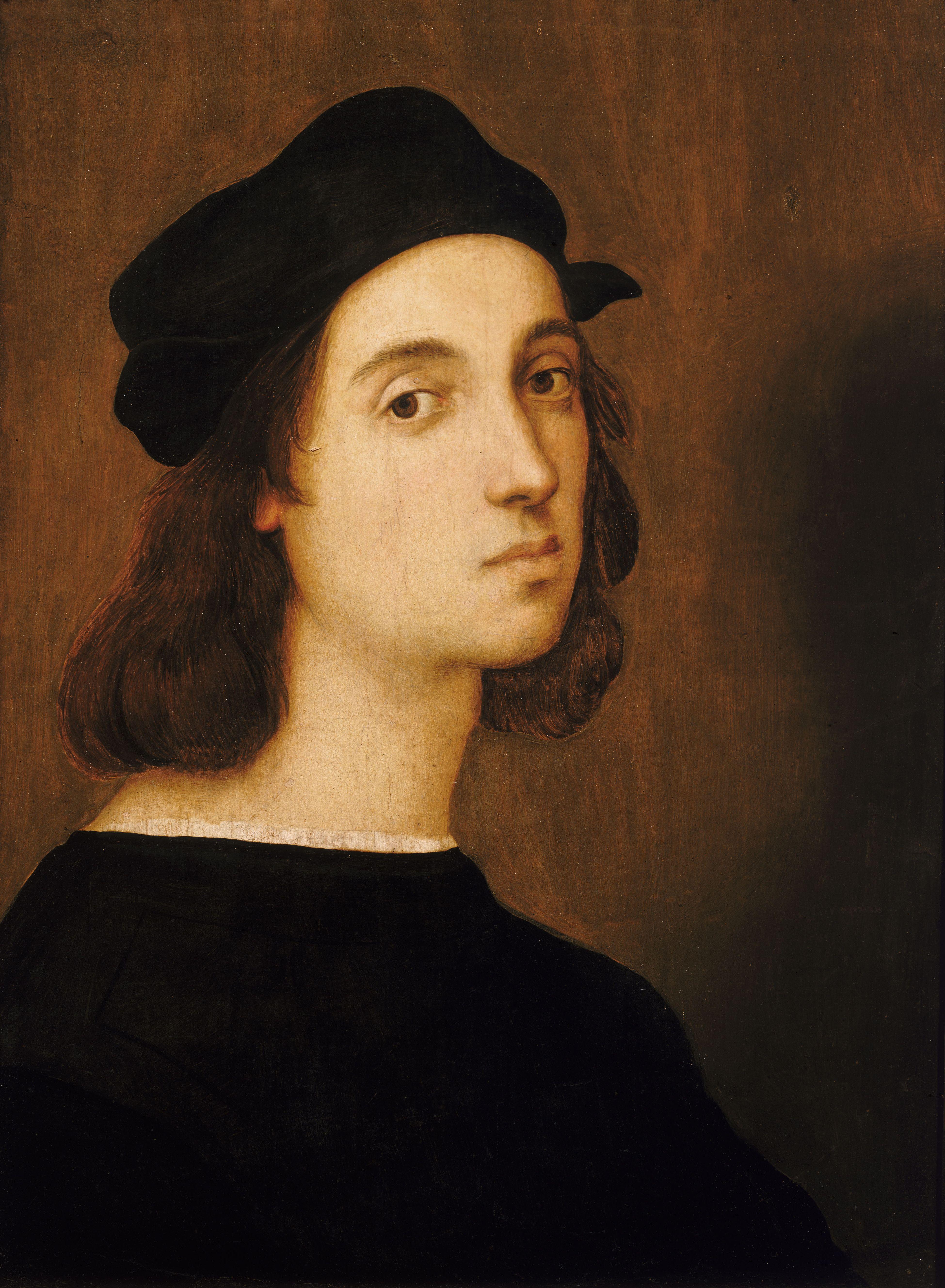Margarita Luti (also Margherita Luti or La Fornarina, "the baker's daughter") was the mistress and model of Raphael. The story of their love has become the archetypal artist-model relationship of Western tradition, yet little is known of her life. Here, she wears the painter's name on a ribbon around her arm and a coy expression that's been likened to the Mona Lisa's smile. In his Lives of the Artists, Vasari claims that Raphael “could not give his mind to his work because of his infatuation for his mistress”; he even insinuates that this mystery woman may have caused Raphael's untimely death (attributed to excessive sexual exertion) all of which would explain why the painting, as striking as it looks, is technically unfinished.
Recently, a new study by Italian art historian Maurizio Bernardelli Curuz suggests Raphael and Luti had already married in a clandestine ceremony. Fearful of a scandal, the artist took the secret to his grave. A string of nuptial allegories in the portrait point to the secret marriage. The biggest clue is the brooch pinned on the fashionable silk turban of La Fornarina, the kind of expensive bauble a woman would wear on her wedding day. The pearl, also included in another portrait of a woman, La Donna Velata, reinforces the theory that the sitter's name was Margherita - a Latin word for pearl - and not Maria Bibbiena, the artist's intended bride. There are other matrimonial hints, from the blue ribbon on the woman's arm bearing Raphael's name - an unusual way to sign a portrait - to a ring on her left hand that was later covered by Raphael's students. The portrait is also painted with background foliage of myrtle and quince, symbols of love, fecundity and fidelity.


 Raphael Santi
Raphael Santi